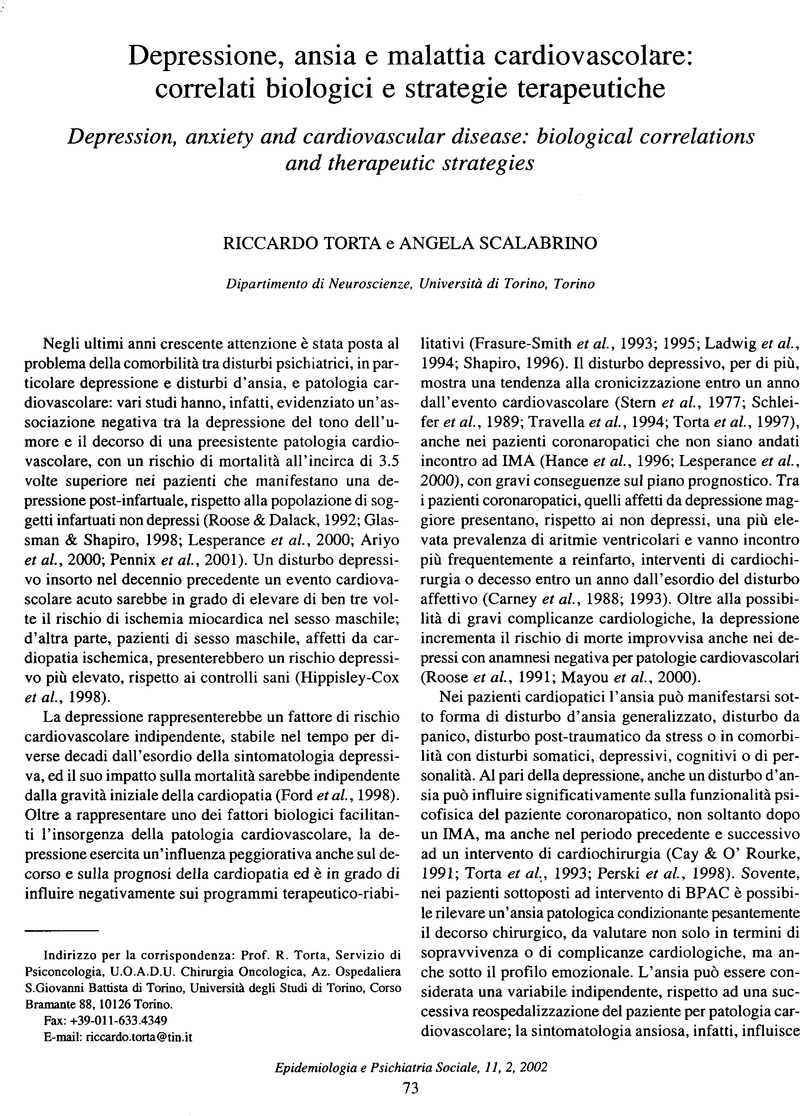Cay, E.L. &
O'Rourke, A. (
1991). The emotional state of patients after coronary by pass surgery. In
Abstracts of International Symposium “Quality of life after open heart surgery”.
Anversa, Duman R.S.,
Heninger, G.R. &
Nestler, E.J. (
1997).
A molecular and cellular theory of depression. Archives of General Psychiatry
54 (7),
597–
606.
Google Scholar 